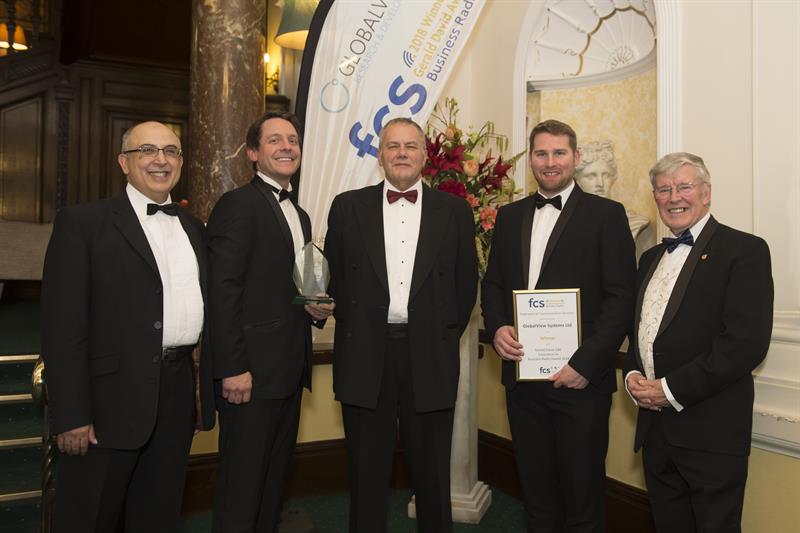The theme of this year’s FCS annual event was ‘providing customer value’, something which was apparent throughout the course of the day. It was split into two content streams – ‘business radio’ (BR18) and ‘vehicle technology installer’ (VTi18).
Proceedings kicked off in the business radio side of the conference with a keynote presentation from Gordon Jenkins of construction industry certification scheme CSCS. His topic of discussion was ‘qualifying the workforce’, looking specifically at an initiative which uses smart ID cards – in conjunction with a bespoke smartphone app – to verify the identity of those trying to access building sites.
Speaking of this, he said: “The technology provides our industry with a means to verify not only identity, but also the qualifications required for entry onto site to fulfil a particular role. It also shows that they have a basic level of health and safety awareness, which obviously is crucially important. It can also record training, and monitor time and attendance.”
Discussing the origins of the roll-out, he continued: “The initiative has been very much driven by health and safety. Construction has always had a bad record for workplace fatalities, and we’re still seeing about one a week at the moment. We have got better, but there’s still a long way to go.”
According to Jenkins the app is available for use both on- and offline. The pertinent information about a person’s core skills is stored on the card itself. The technology used to provide the service is open source rather than proprietary, something which was intended to enable other potential functions.
Things became much more ‘radio’ focused with a presentation from Hytera product specialist Chris Cant, who discussed the company’s burgeoning range of private Push-to-talk over Cellular (P-PoC) solutions. Having given a brief history and description of PoC technology – “it enables subscribers to use their phones as walkie talkies” – she focused in particular on Hytera’s P-PoC 6000 application, as used in conjunction with its PNC370 handset.
Able to function over both LTE and DMR networks, interworking services provided by the P-PoC 6000 include a variety of data messaging functions, real-time photo and video uploading, alongside group and individual PTT and so on. Cant also discussed (in less detail) the company’s P-PoC 9000 application, which – tantalisingly – she said complies with 3GPP Release 13 and is both mission-critical video and mission-critical data. enabled.
Staying on the subject of ‘value’, Ofcom delivered a three-part presentation from Paul Jarvis, Jenny Bailey and Neil Rynn looking at signal monitoring. Arguably the most compelling of these sections came from senior engineer Bailey, focusing as it did on the organisation’s development of ‘cheaper’ solutions – including drones – for deployment at difficult-to-reach sites.
Speaking of this, Bailey said: “We often want to monitor signals at a remote location, for instance on top of a block of flats or a school. We can’t usually put out an expensive piece of test equipment in these scenarios, so we’ve looked at coming up with something a bit more expendable in the form of small boxes containing fairly cheap parts such as Raspberry Pis and Odroid computers. These enable us to scan a number of different frequencies, in relation to a variety of monitoring applications.
“Regarding drones, one use-case has been to support coverage planning work for digital television. To achieve this the team had to design a suitable antenna and cradle for mounting a spectrum monitor that could be powered by the drone. The whole assembly was then characterised and calibrated.”
Other presentations in the BR18 stream included Richard Russell from Tait discussing, among other things, public safety solutions, Kenwood’s Stephen Edwards on ‘practical considerations for high density and wide area DMR systems’, and Transport for London’s Dimitris Kaltakis talking about the organisation’s comms strategy. The VTi18 side included Paul Wilkes from the Fleet Operators Recognition Scheme offering a vehicle safety equipment guide, as well as a variety of presentations from FITAS’s Jason McComb.
This year’s Gerald David Award for Innovation in Business Radio, meanwhile, was won by GlobalView Systems for its RETAIN notification solution for retained firefighters.
Speaking of the importance of the award – which was presented after the conference during the event’s gala dinner – the FCS’s Tim Cull said: “Gerald David (OBE) proposed that it would be advantageous if a tangible benefit to innovators was available, encouraging a specific focus on innovation within the industry.
“The Award for Innovation in Business Radio came into being in 2004, and recognises the most innovative company in the UK within the business radio industry.”

The Award for Innovation in Business Radio was presented to GlobalView Systems
As in other years, BR and VTi 2018 was a must-attend event. We look forward to next time.



